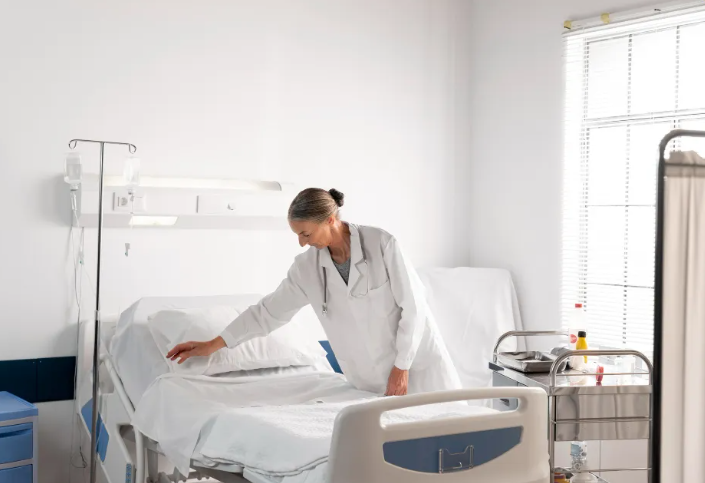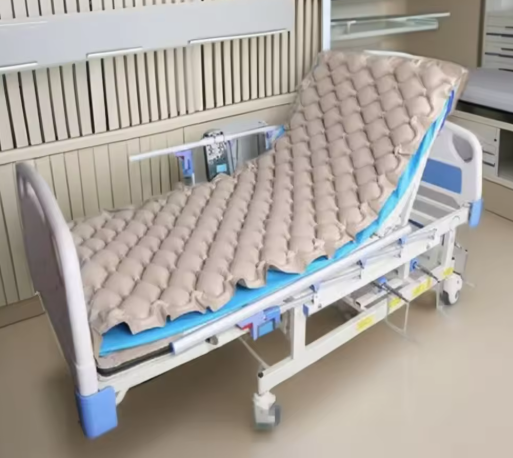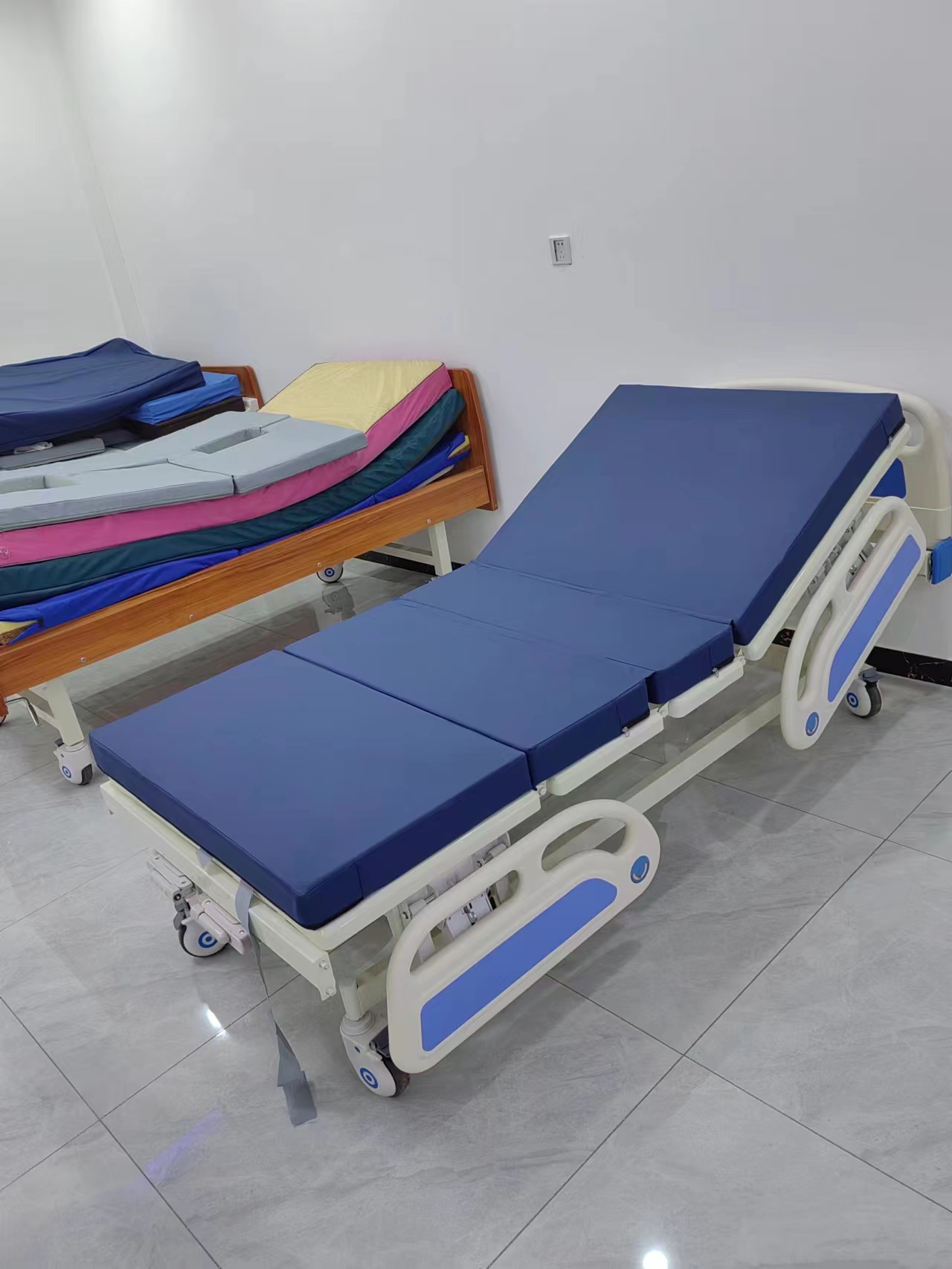Choosing the right hospital bed mattress can be tough with so many options. The right mattress affects pressure relief, durability, and comfort, all of which play a major role in a patient’s well-being. Have you thought about what really impacts comfort and support? One detail that often gets missed is understanding the patient’s specific needs and how they affect the mattress choice. Let’s focus on what truly matters.Each type offers unique features to meet specific needs, such as pressure relief, support, and durability. Here are the most common types:
Types of Hospital Bed Mattresses
Foam Mattresses
Benefits: Foam mattresses are affordable and popular. They provide basic comfort and moderate support, making them a good option for those without significant medical needs.
Best for: People with limited mobility who don’t need advanced pressure relief.
Price range: Typically between $100 and $400.
Innerspring Mattresses
Benefits: These mattresses combine coil springs with foam layers. They offer good support and durability. They’re suitable for individuals who need extra body support.
Best for: Those who need a firmer surface or have higher weight requirements.
Price range: Generally between $200 and $600.
Gel-Infused Memory Foam Mattresses
Benefits: These mattresses provide better pressure relief and help regulate heat. The gel infusion keeps the mattress cool, preventing overheating during long use.
Best for: People at risk of pressure ulcers or those who feel too hot on regular mattresses.
Price range: Typically between $400 and $800.
Alternating Pressure Air Mattresses
When choosing the best hospital bed air mattress for comfort, you should consider a few important factors to ensure the mattress provides good support and care.
Alternating Pressure Technology
Many hospital bed air mattresses come with alternating pressure systems. This means the air bladders inside the mattress inflate and deflate regularly, helping with blood circulation and reducing the risk of bed sores. This feature is especially important for patients who are bedridden for long periods, as it helps prevent pressure ulcers and supports skin health.
Durable and Supportive Materials
Hospital bed air mattresses are made from strong materials like Polyvinyl Chloride (PVC) or textile-reinforced Urethane Plastic. These materials are sturdy and can support up to 350 pounds, ensuring that the mattress is reliable and effective for many types of patients.
Water-Resistant and Vapour-Permeable Features
Many models are made with water-resistant materials and vapour-permeable surfaces. This helps keep the mattress dry and comfortable, preventing moisture buildup that can cause skin problems.
Lightweight and Easy to Maintain
These air mattresses are lightweight and easy to maintain, which benefits both patients and caregivers. Most models are designed for frequent cleaning and are machine washable, making them easy to care for.
Noise from Air Pump
One downside of air mattresses is that the air pump can be noisy. The pump, which inflates and deflates the air cells, might make a sound that can disturb some patients, especially those who are sensitive to noise while resting.
Higher Costs
Air mattresses for Hospital Beds are generally more expensive than other mattress types. Their advanced features, such as alternating pressure and durable materials, come with a higher price tag, which can be a concern for people with budget limits.
Notable Models
- Drive Medical Med-Aire Plus: This mattress has an 8-inch deep air cell design, a removable nylon stretch cover, and a CPR valve for quick deflation. It provides low air loss and alternating pressure therapies for better patient comfort and care.
- Grace Medy Anti-bedsore Air Mattress: This model features a 3:1 cycle of inflation and deflation, offering surface-level air pressure changes for massage and active pressure relief. It supports up to 2/3 of the body at a time, helping to reduce pressure points effectively.
Medical Sponge Palm Fiber Mattress
Medical sponge palm fiber mattresses, made from a blend of organic latex and organic coconut fiber (coir), offer a comfortable and practical solution for Hospital beds. These mattresses provide strong support and are both eco-friendly and hypoallergenic.
Key Features and Benefits
- Natural Materials: Made with 100% organic latex and coconut fiber, this mattress is hypoallergenic and germ-resistant.
- Balanced Support: The combination of latex and coir offers firm yet supportive comfort, helping maintain spinal health and reducing aches and pains.
- Variety of Comfort Levels: Available in different firmness options, like medium firm, very firm, and extra firm, to suit individual preferences.
- Good Ventilation: The mattress allows air to flow freely, keeping the sleeping environment cool in summer and warm in winter, while absorbing moisture to reduce humidity.
- Dust and Allergy-Free: Coconut fiber doesn’t attract dust, reducing dust mites and bed bugs. It’s a great choice for those with allergies or respiratory problems.
- Long-Term Durability: The mattress keeps its shape and bounce over time, offering consistent support.
- Chemical-Free: Free from harsh chemicals, reducing the risk of long-term health problems like liver damage or autoimmune conditions.
- Mold and Moisture Resistance: The mattress is mold-resistant, anti-microbial, and moisture-wicking, ensuring a clean, healthy sleeping environment.
This mattress is a great option for both medical and home care, providing a healthier and more comfortable sleep experience.
Key Features for Comfort
When choosing a hospital bed mattress for comfort, a few key features are essential for a restful experience.
Adjustable Features
Adjustable settings like height, backrest, and leg elevation let you personalize your comfort. These adjustments help you find the best position for sleeping or resting, relieving pressure on certain areas and supporting health conditions.
Material and Support
Cellulose Fiber Mattresses are a great choice, offering soft, breathable, and hypoallergenic materials. These mattresses are ideal for medical conditions, providing comfort and support.
Mattress Thickness
Hospital Bed Mattresses range from 4 to 6 inches thick, with some models offering thicker layers for extra support. For instance, Grace Medy’s mattresses come in 4cm, 6cm, and 8cm thicknesses, so users can pick the right level of comfort.
Firmness Level
A medium firmness is often recommended for balanced support and comfort. It ensures proper spinal alignment while preventing too much sinking.
Specialized Mattresses
- Bariatric Foam Mattresses provide strong support for bariatric patients, with high-density foam that evenly distributes weight and helps prevent pressure injuries.
- Low Air Loss Mattresses and Alternating Pressure Toppers help regulate temperature and moisture, improving circulation and reducing the risk of pressure ulcers.
Considerations When Purchasing
When choosing the right hospital mattress, several important factors need to be considered:
- Mattress Fit: Ensure the mattress fits perfectly with the bed frame. An improper fit can lead to pressure sores, falls, or poor circulation, negatively impacting the patient’s comfort and health.
- Patient’s Body Type and Weight: Choose a mattress that suits the patient’s body type, providing adequate support. If the mattress is too small, it may cause discomfort and insufficient support; if it is too large, the patient may slide when moving.
- Medical Conditions and Activity Restrictions: Patients with specific health issues may require specialized mattresses. For instance, patients at high risk of pressure ulcers can opt for pressure-relieving mattresses, which help redistribute weight and promote blood circulation. If the patient has mobility difficulties, mattresses with repositioning support or special position adjustment features can be selected.
- Mattress Types Consideration:
| Mattress Type | Details |
|---|---|
| Spring Mattresses | Budget-friendly but limited in pressure distribution. Suitable for patients with some mobility, but not for those who are bedridden long-term. |
| Foam Mattresses | Offer better pressure relief than spring mattresses. Multi-layer foam designs can conform to the body, reducing pressure points. Gel foam mattresses provide better temperature regulation, enhancing comfort. |
| Alternating Pressure Mattresses | The best choice for high-risk patients, as they inflate and deflate periodically, changing pressure points and improving blood circulation. |
- Size Selection: Choose a mattress slightly longer than the patient’s height to ensure optimal comfort. For heavier individuals, a thicker mattress may be needed, with options for foam or pressure-relieving models.
- Waterproof and Anti-stain Features: Waterproof mattresses are a practical choice for patients with incontinence issues. Antibacterial mattresses help maintain hygiene, which is crucial for patient care.
- Durability and Budget: Consider the mattress’s lifespan and its ability to withstand long-term wear. High-quality, thicker mattresses provide better pressure distribution and comfort but require a balance between comfort and budget. If the mattress will be used long-term, investing in one with a warranty may be worthwhile.
- Balance Between Comfort and Support: For bedridden patients, selecting a mattress that provides both comfort and support is crucial. Memory foam and gel foam mattresses are especially recommended, as they relieve pressure points while offering good spinal support.
Considering these factors will ensure that the chosen hospital mattress provides the patient with optimal comfort, safety, and support.
Grace Medy provides hospital mattresses, and also provides hospital furniture and medical accessories, rehabilitation equipment and other products such as operating tables, surgical lights, emergency trolleys, Wheelchairs, walking aids and more.
Summary
Choosing the right hospital bed mattress means finding a balance between comfort, support, and durability to meet your needs. Whether you’re caring for a loved one or choosing for yourself, focusing on health, comfort, and long-term well-being makes a big difference. Taking time to review all options helps ensure better sleep, faster recovery, and a higher quality of life for those who need it most.



